| 1 | A vicious non-venomous snake |
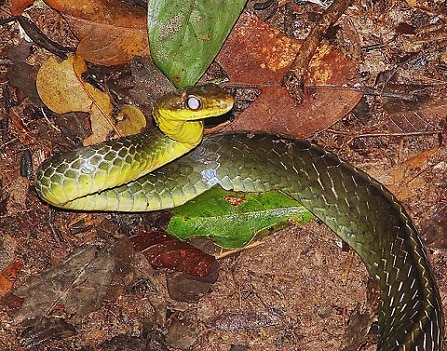
Most snake guidebooks will mention either venomous or non-venomous, but these barely explain a snake’s full personality. A snake with no toxins can be a shy leaf dweller, a motionless ambush snake, or a maniac which bites and slashes with unbridled fury. The machete savane is one such snake. This is a Brazilian species, which measures 46cm at birth, and pushes to a maximum of 205.4cm in adulthood, with males being slightly longer.
Machete savanes are incapable of killing a human being, and no deaths have been recorded. Yet they’re notorious for biting and snapping at people that invade their personal space. Reports from Brazilian forests suggest that they instinctively target the face, and even the eyes in a mad attempt to blind people. This is an unpredictable snake, which could flee across a river, but could stand its ground, with no easy way to tell.
Machete savanes are flexible, and are so powerful that curious tourists have been bitten painfully while holding the tips of their tails. They’re strong enough to bend 80% of their body back in mid-air, and deliver a sudden snap to the nose. This strong tail comes in use with one of their favourite tricks – dangling from branches.
| 2 | Most common in wet forests |
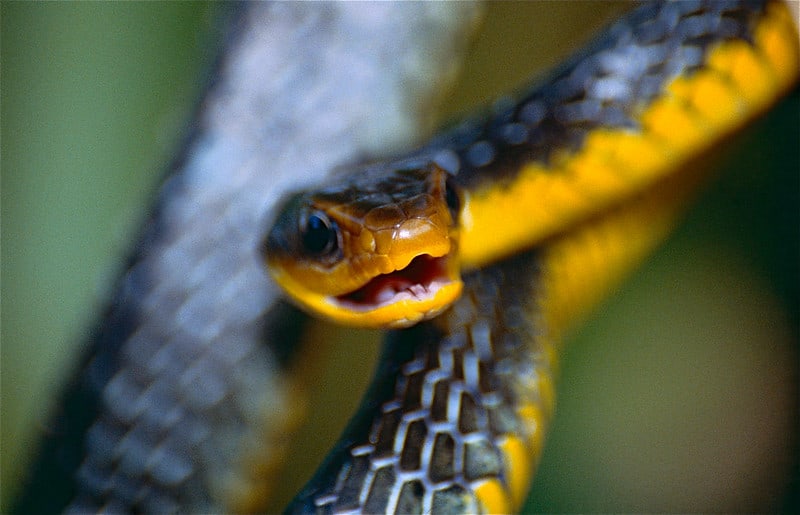
Machete savanes are a common snake in northern South America. Their territory includes Costa Rica, French Guiana, Suriname, Venezuela, and the northern third of Brazil. This savage snapper never appears in bustling towns, and unlike a boa constrictor, they mostly avoid grassland. They’re a forest snake through and through, particularly the most untouched, pristine forests which are barely affected by mankind.
They can cope with degraded forests and forest margins to some extent, and are sometimes spotted on roads between forests, but to meet a machete savane (which may be unwise), you may need to bring an actual machete. This habitat gives them several skills: 1) dropping onto people’s heads, 2) dangling from branches with their tail, and 3) resting calmly on an enormous leaf. Machete savanes also appear in cocoa plantations, palm swamps, igapós and forest clumps along rivers (riparian forests).
Machete savanes have a strong correlation with wet forests, and are less likely in drier woodlands (unlike the dangerous Mexican cantil). This species is a strong swimmer, and will vanish into a drainage culvert, or cross a river to explore new areas. To avoid this angry snake, the best solution is to never enter a Brazilian forest.
| 3 | Reaches 15 metres above ground |
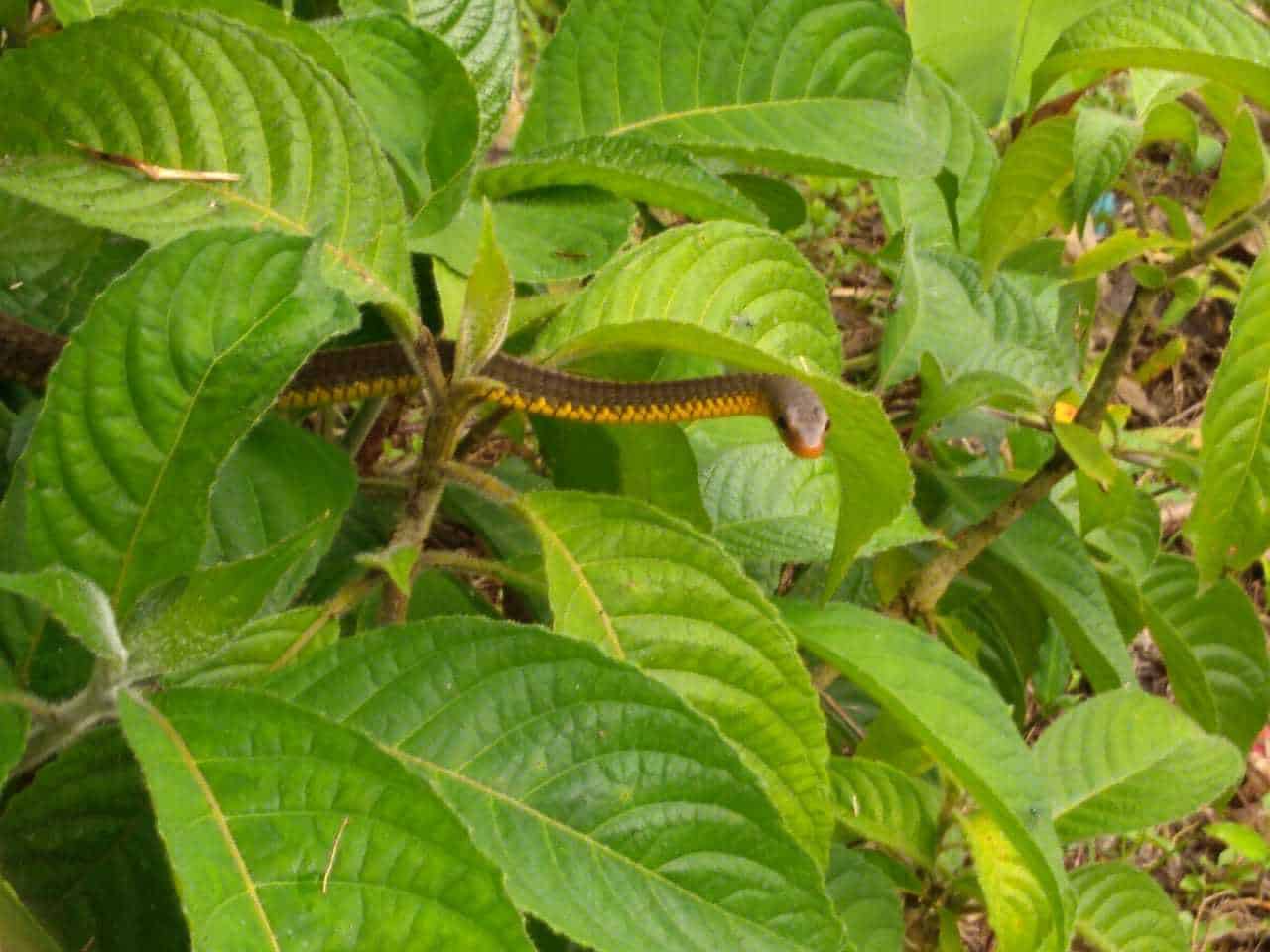
As a diurnal snake rather than nocturnal snake, machete savanes regularly encounter humans, and unleash their aggressive personality for all to see. This is an abundant snake in the forests where they live, and any moist Brazilian forest you walk past has a strong chance of containing a colony, waiting for you to foolishly enter.
Their lifestyle also brings them across humanity’s path. Machete savanes are a semi tree-dwelling snake, resting on bushes and lower branches of trees. With a thin body, they have excellent balance, and rest lightly without causing branches to awkwardly snap. Surveys find that machete savanes are most often spotted on branches slightly above eye level. At night, they retreat to the highest, most towering branches, where they set up a comfy perch and fall asleep. Machete savanes can reach 15 metres high before settling down for the night, similarly to their cousin the south American sipo (16 metres).
Once morning comes, they ditch these precipitous heights and drop down into the thick of the action again, ready to bump into photographers or tourists and raise some hell. Alternative names for this species include yellow machete, golden tree snake, Amazon coachwhip, and yellow liana.
| 4 | Kinks its body into weird shapes |
Lacking any form of venom, the machete savane has been forced to evolve new tactics to survive in the Brazilian jungle, an oasis of dangerous lifeforms. At 3 metres, they’re too large to vanish into a pile of leaves, so becoming more aggressive was an obvious choice. However, machete savanes also kink their body at several points, forming unusual angles, mimicking a fallen stick, hoping that predators will fail to notice them.
Machete savanes can also inflate their throat to appear larger, showing pink skin between the scales. When in strike pose, they normally keep their mouth hanging open, with a wide eyed stare. They keep their neck bent, like they could unleash a rapid jab at any second. They could bite or they might flee – the presence of water is the only way to predict a machete savane’s actions, as they often flee across forest pools.
As for supposedly targeting the eyes, this might seem advanced, but is easily within a snake’s capabilities. Red spitting cobras have been proven to fire their venom globules at the eyes, even two round circles painted onto a wall.
| 5 | Male on male wrestling |
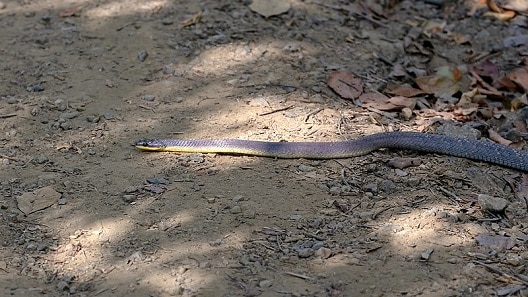
Machete savanes don’t just unleash their aggression on humans – they save a helping for each other. This is a classic species for male on male wrestling, which is believed to be for securing rights to females.
This wrestling is highly ritualised, and the snakes taking part never bite each other, or cause any lasting injury. Two machete savanes will coil the mid-section of their bodies around each other, like a tangled piece of wire. While keeping their necks close together, they’ll then attempt to raise their head above the other, by slamming the chest of their enemy to the ground.
Whichever snake keeps its head a few centimetres above will be the “winner”; they’ll establish dominance, and most likely gain the affections of female machete savanes. A typical wrestling session lasts for 30 minutes, and the snakes keep their heads tilted backwards as they duel. This wrestling has also been observed in their close relative, the two-headed sipo (Chironius bicarinatus).
| 6 | Bulbous eyes |
Identifying a machete savane is simple, as there’s no snake that looks truly like them. They have a dark green/brown back contrasting vividly against a yellow belly, with the yellow and green scales being more intermingled in some. Their eyes are also massive and bulbous, and it’s thought that they hunt primarily using their vision.
Machete savanes also have a sharp ridge of scales down their spine, which you could easily feel with a finger. This is a gender difference too, as the ridge is far sharper in males, and only mild in females. This ridge has led to the nicknames “razorback” and “keeled tree snake”.
A slight black edge to each scale is another signature feature. Despite their bright yellow belly, machete savanes have surprisingly strong camouflage on a branch or tangled bush. With their huge eyes, the odds are that they can see you, but not you them.
| 7 | Many confirmed prey |
Machete savanes are an active predator which searches the forest floor avidly for their prey, rather than waiting patiently. Rodent hairs have been found in their stomach, but lizards and frogs are their main prey. Confirmed species include…
Rusty treefrog (Boana boans) – a brown frog with orange eyes, reaching 10-13cm long. Machete savanes have competition for this meal, as its other snake predators include green jararacas, mountain keelbacks and green parrot snakes.
Rainbow whiptail (Cnemidophorus lemniscatus) – a lizard prey measuring 30cm, which alternates between bright green and blue. Other snake predators: green vine snake, Pacific longtail snake.
Paradoxical frog – a bizarre amphibian which has the world’s largest tadpole, at 27cm. In adult froghood, they shrink dramatically, in a reverse of the norm. Other snake predators: Brazilian smooth snake, mountain keelback.
Nauta salamander (Bolitoglossa altamazonica) – an amphibian found on low vegetation in rainforests, or in other words, the exact same place as the machete savane. Other snake predators: Linnaeus’ sipo, royal ground snake.
Machete savanes are fighting for every meal, as there’s always rival snakes attempting to muscle in on their prize.
| 8 | Nemesis: laughing falcon |
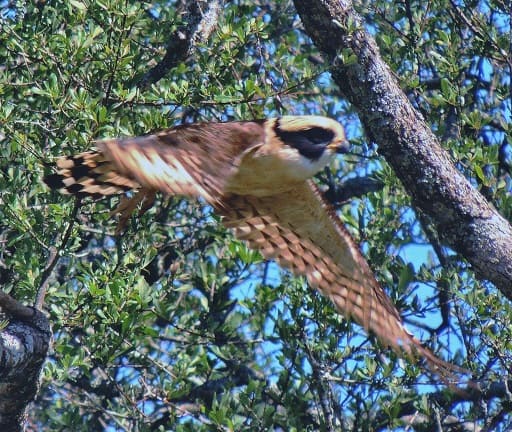
The machete savane’s harsh existence continues with their legions of predators, eagerly licking their lips. For example, machete savanes are a confirmed meal for crabs. In 1997, scientists in Tobago spotted a manicou crab feasting on a large snake, in a hollow between two large boulders, 2 metres from the river bank. They recognised it by its head colouring, but before scientists could take a picture, the crab dragged the machete savane into its dark burrow.
They’re also bird prey, specifically for the laughing falcon. This story is simpler, as in Macapá municipality, Brazil, scientists watched as the falcon flew down, picked up a machete savane in its talons, and flew away back to its tree perch, without dropping its secure prey. The snake was so big that the falcon was unable to eat it whole, instead eating it in pieces, which took 50 minutes.
Machete savanes may even be spider prey. A 2021 study documented several snakes caught in spider’s webs and predigested into a soft mush using spider enzymes, including scarlet snakes and Texas blind snakes. While not a wild sighting, one spider was recorded eating a machete savane in the captive/experimental trials.
| 9 | Secrets of the machete savane |
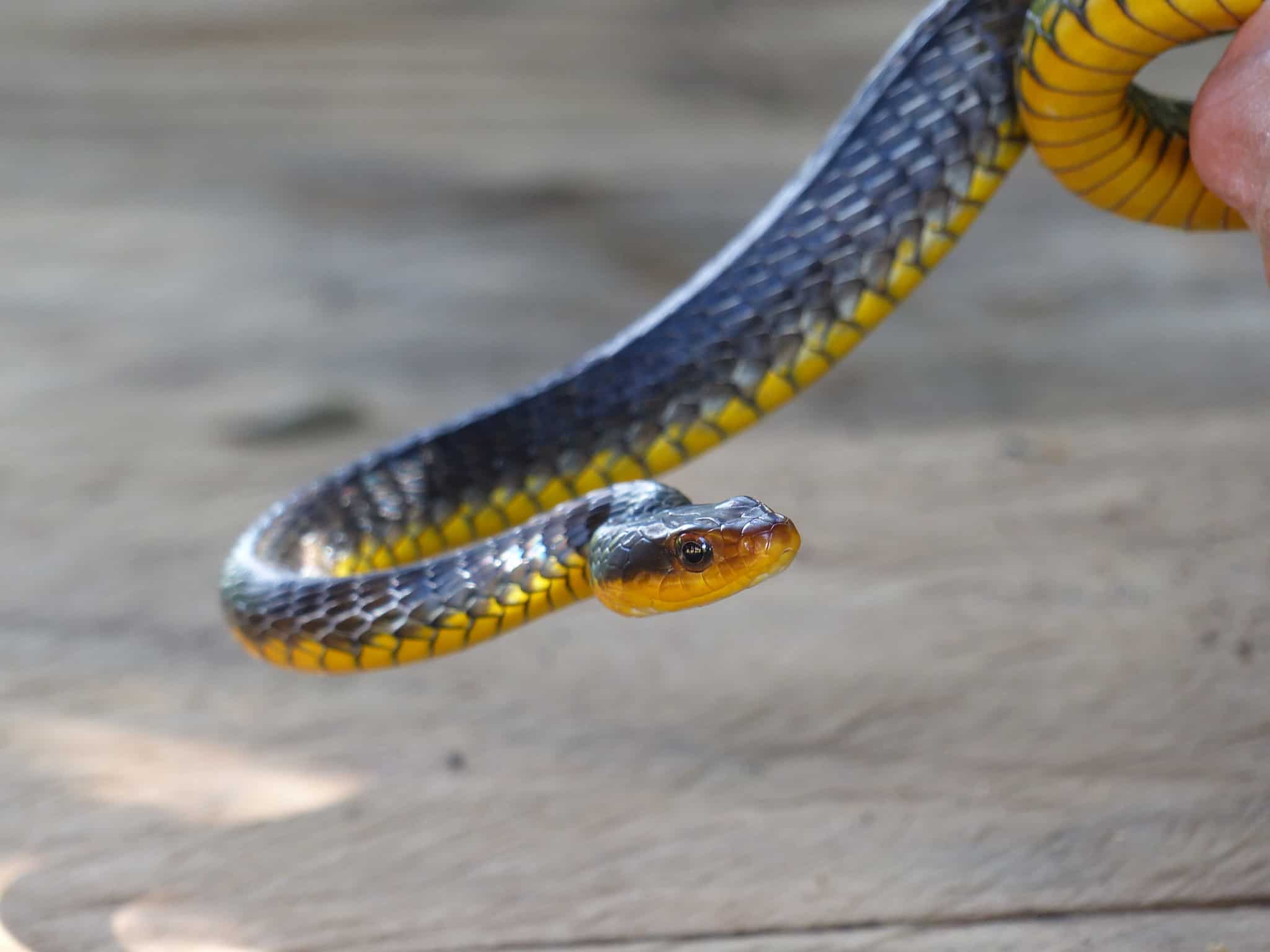
Vipers mostly lay live young, but machete savanes are a traditional snake and lay eggs. These come in batches of 5-8, which is relatively low, compared to over 100 for the mud snake. As hatchlings, machete savanes are a lighter green, before gradually darkening with age.
It’s extremely rare to find machete savanes in captivity. There’s barely any global trade, only appearing in the European market once in a blue moon. This isn’t because they come from the heart of jungled Brazil – that didn’t stop emerald tree boas. It’s because of their aggressive temperament, difficulty to feed, and a lack of knowledge about keeping them.
Machete savanes have a very long tail, and their tongue is light pink. Their eyes are not only huge, but protrude sideways from their head when seen from a bird’s eye view. With their branch-dwelling ways, they’re an effortless tree climber. A thick trunk is barely a tougher obstacle than an escalator for a machete savane.
| 10 | Closest relatives |
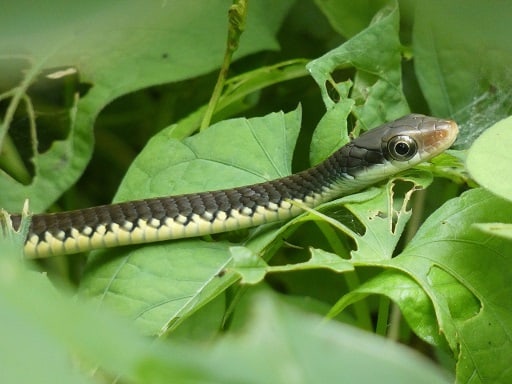
Machete savanes are part of the Chironius fmaily, which has 23 members. All have large bulging eyes and a long thin tail, and most live in forests. Two of the 23 were originally subspecies of the machete savane, but have since been split off. These are…
Werner’s sipo (Chironius flavopictus) – found in Ecuador.
Mountain sipo (Chironius spixi) – found all along the Andes mountain range. One of the few to live outside forests.
Out of 3900 snakes worldwide, the machete savane’s closest relative on the evolutionary tree is the long-tailed machete savane (Chironius multiventris). This version lives further west, including Peru and Ecuador, and has a browner colour. Versions that coexist with machete savanes in Brazil include Linnaeus’s sipo, AKA Chironius exoletus. This version is far greener, with a vibrant body and a belly that is pale green rather than yellow. The most northerly species is the Ecuador sipo (Chironius grandisquamis), which actually reaches as far north as Honduras and Nicaragua.
